Warm vs. Cool Foundation: How to Choose the Right Shade for Your Undertone

Key Takeaways
Cool undertones have pink, red or blue hues beneath the skin and come in every skin depth, so pair both undertone and depth for a flawless **foundation match**. Cross-check with others like veins, sun reaction, white fabric and jewelry to really nail down your undertone.
💫 Discover Your Complete Color Palette
Ready to discover all the colors that make you look radiant? Our comprehensive color analysis will reveal your complete personal palette - perfect for hair, makeup, and wardrobe decisions.
Take Color Analysis Quiz →Seek out foundation disclaimers that say cool, pink or rosy and steer clear of gold or yellow. Test a few cool shades along your jawline or neck, and select the one that vanishes into your skin after it settles.
Try foundation in natural light and wait 10-15 minutes to monitor for oxidation that can darken or warm the shade. Track your top shade names and check back with seasonal changes to remain on point.
The best foundation for cool undertones matches pink, red, or bluish hues and doesn't shift in daylight. Good brand matches are Fenty Pro Filt'r 150, NARS Light Reflecting "Mont Blanc," Estée Lauder Double Wear 1C0, and L'Oréal True Match C1.
📚 Recent Articles
What is a Cool Undertone?
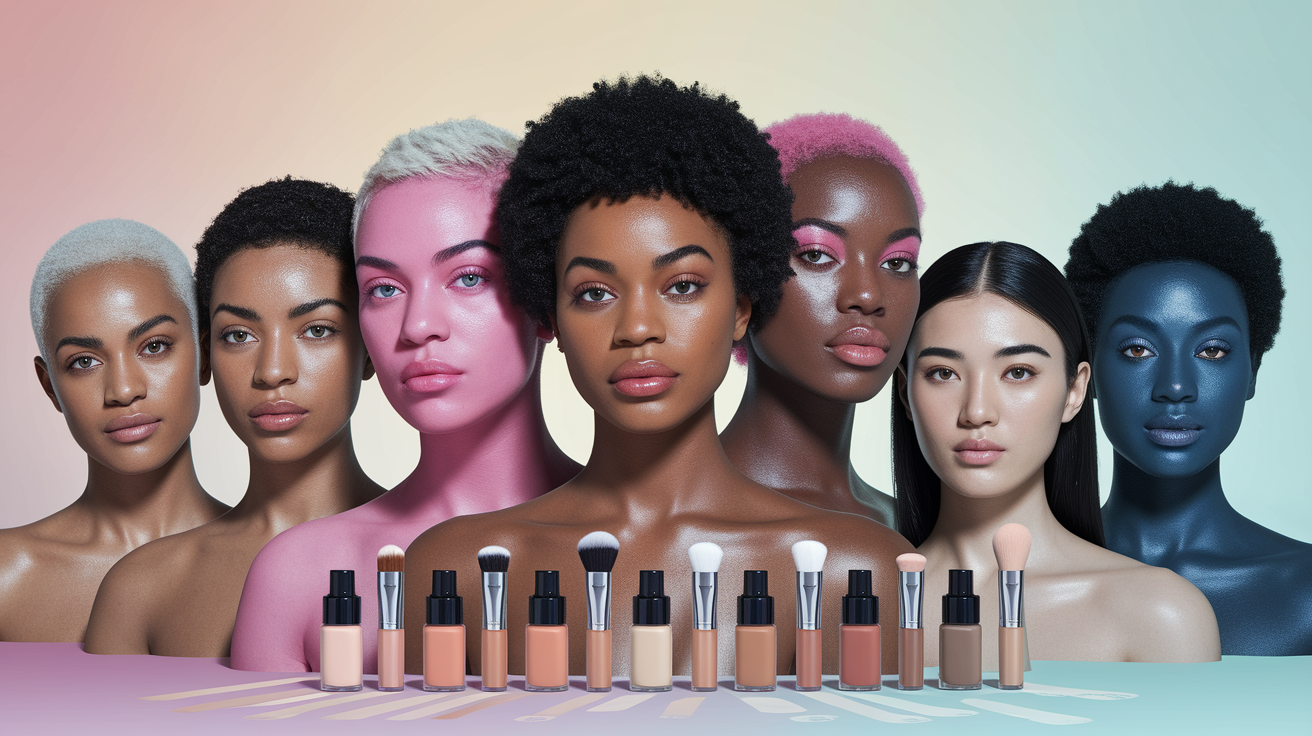
Cool undertone indicates that your skin features blue, red, or pink tones beneath the surface. This applies to any skin tone, from deep to light. Understanding your skin undertone is crucial, as it determines how the right foundation shade will appear on your complexion, ensuring that products like blush, bronzer, and lip color look fresh and create a flawless finish.
The Color Beneath
Cool undertones reflect shades of blue, pink, or even a gentle purple cast beneath the true skin color. Consider it the underlying hue that shines through when light touches your skin. On some, it's pink across the cheeks; on others, a subtle blue at the temples. That is, it's one of the three main undertone categories—alongside warm and neutral.
These tones dictate which **foundation shades** suit you. Pink- or blue-based foundations generally sit best on cool skin, and bronzers with red-brown rather than orange tones look more natural. Lip colors with blue-reds, berries, and mauves tend to look crisp rather than harsh.
Check your jawline and neck in daylight for the truest read. The cheeks can flush warm from heat or care products, so the jaw provides more consistent hints. Try the vein test too: veins at the inner wrist that look blue or purple often point to a cool undertone.
Match what you see to a color palette. On paper swatches, cool-friendly bases tend to be rose, porcelain-rose, beige-rose, or neutral-cool. Steer clear of golden or honey if they make you sallow.
Beyond Skin Tone
Undertone is not your surface skin color. Skin tone is the depth (light, medium, deep); undertone is the hue underneath it. Two people with the same depth can need different bases: one cool, one warm.
That's why the same 'medium 3' can look pink on one person and yellow on another. Choose products by pairing both: depth plus undertone. You want the value to match your face and the tint to complement what lies underneath.
Undertone remains constant while your skin tans or lightens. Your shade depth might change with the seasons, but the cool undertone doesn't.
Cool vs. Others
Cool vs. Warm (yellow, golden, peach) vs. Neutral (balanced mix). Quick signs: blue or purple veins, silver jewelry looks clean, white tees look bright, and pink or blue-based makeup blends well suggest cool.
Greenish veins, gold jewelry glow, and peach or golden makeup looking right = warm. If both silver and gold look good on you, and your veins appear mixed, you could be neutral.
Take undertone as your constant foundation, blush, and lip guide. Cool undertones lean towards pink or blue-based foundations, rosy or berry blush, and blue-red or plum lips.
| Undertone | Under-hue | Veins | Metals | Best base tones |
|---|---|---|---|---|
| Cool | blue/pink/red | blue/purple | silver | pink/blue-based, neutral-cool |
| Warm | yellow/golden/peach | green | gold | golden/peach, warm-beige |
| Neutral | balanced | mixed | both | true beige, neutral |
Identify Your Cool Undertone
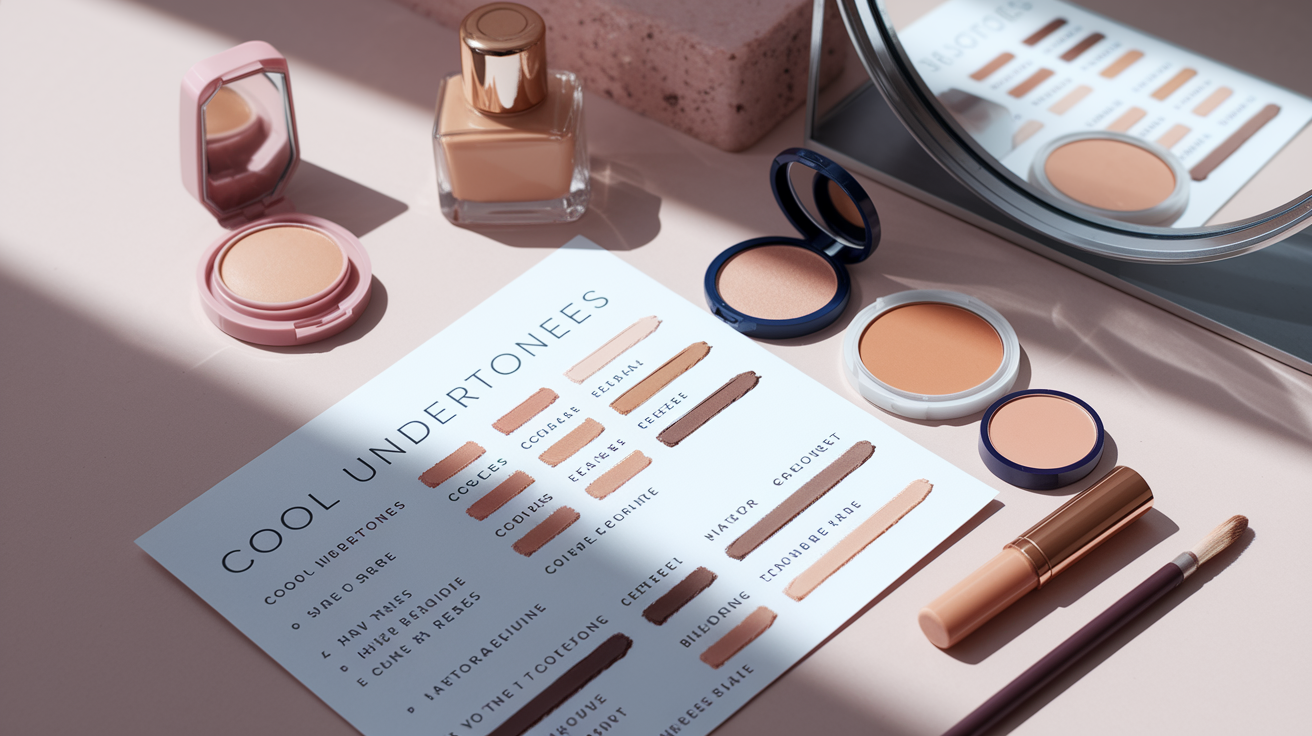
Undertone is the underlying hue of your skin, which is essential for finding the right foundation shade. Skin tone ranges from light to deep, while undertones can be cool, warm, or neutral. Identifying your cool undertone helps avoid a chalky or orange foundation fiasco, ensuring a flawless makeup look.
Checklist:
- Vein color in natural light
- Sun reaction and post-sun color shift
- White fabric against face
- Silver vs gold jewelry
- Clothing and makeup colors that flatter
- Note if you see mixed signals (possible neutral)
1. The Vein Check
Stand by a window and examine wrist veins. If they read blue or purple, that indicates cool; green means warm, a combo implies neutral, which can occur and confuse matters. Test both wrists for a consistent reading and utilize this as quick filter prior to trying foundation in store or at home.
Pair it with other tests for better odds, since lighting can skew color.
2. The Sun's Reaction
If you burn quick and tan slow, that's frequently tied to cool undertones. Note what happens after short sun time: do you turn pink or red first, then maybe tan later? That pink flush is a classic cool indicator, and it can assist you in distinguishing undertone from skin tone, as darker skin can possess cool undertones.
Regardless of your outcome, wear broad-spectrum SPF 30+ and reapply — sun care is non-negotiable.
3. The White Fabric Test
Hold a clean white t-shirt or towel up near your face in natural light. If your skin appears bright, clear, or slightly rosy next to pure white, you probably lean cool. If white brings out yellows or sallowness, that's warm, while neither may be a neutral.
Save this as a companion test to the vein and sun checks for a more definitive verdict.
4. The Jewelry Preference
Test simple silver and gold pieces around your face. Silver, white gold or platinum tend to flatter cool undertones; gold tends to light up warm. If both look good, you may be neutral.
I wear silver primarily, my sister gold, so I know we each have a cool and warm undertone respectively.
5. Your Natural Colors
Keep track of what hues make you pop. Jewel tones, blue‑based red, pinks, berries, cool mauves, charcoal, navy, crisp white and pale pink often adores cool undertones. Earthy browns, mustard, peach and orange can combat them.
Makeup list for cool undertones:
- Foundation: cool (C), neutral‑cool (N/C), or pink‑based shades
- Blush: cool pink, rose, berry, plum
- Lip: blue‑red, raspberry, dusty rose, wine
- Highlighter: icy pearl or soft champagne, not gold
Knowing your undertone assists you in choosing natural‑looking foundation and blush, as well as avoiding mismatched shades. Save your test checklist on your phone for the next shade hunt!
Choose Your Foundation
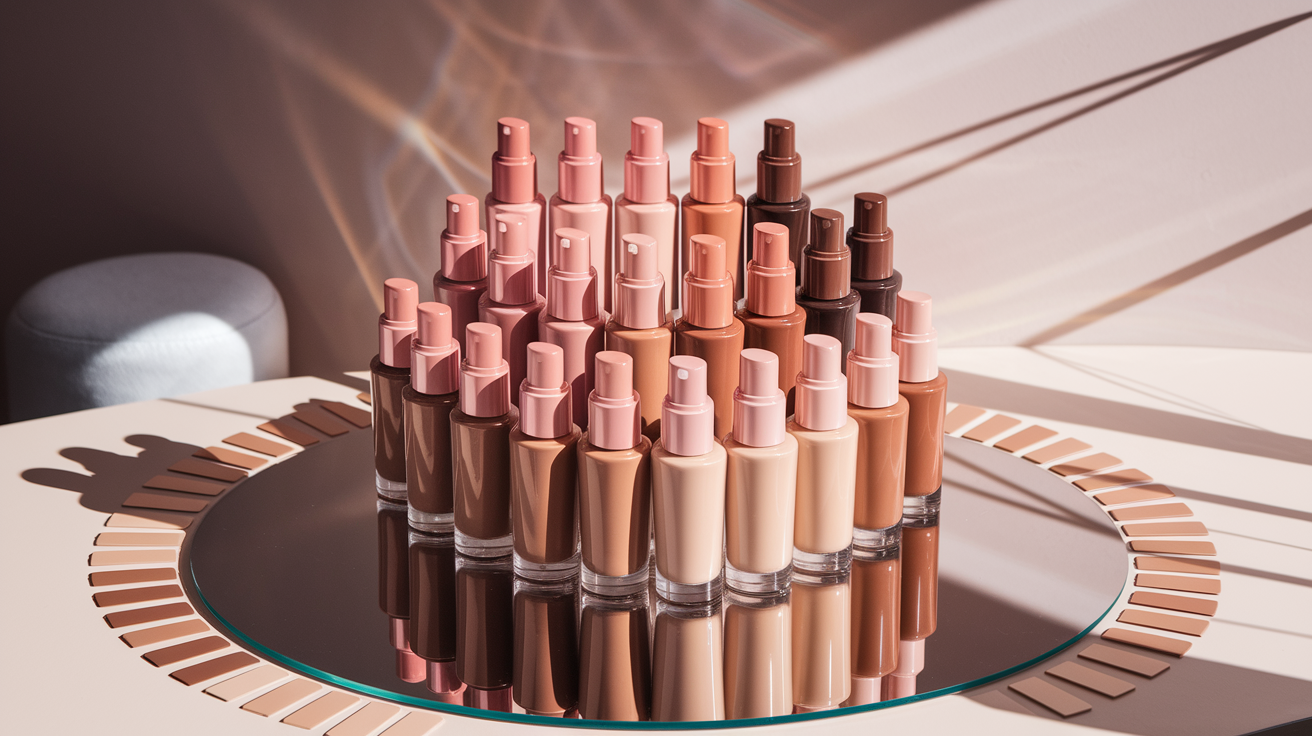
Focus on two things at once: undertone and depth. Undertone is your skin's inherent base color—cool, warm, or neutral—and depth is the lightness to darkness of your skin. Mixing the two causes mismatches. For cool undertones, look for shade names containing "C", "cool", "pink", "rose" or "neutral-cool". Forget "warm" or "golden" or "yellow.
Try to test on bare skin along jaw and neck, then step into sunlight. A speed-matching chart can help you narrow your depth and finish quickly, but real-skin swatches seal the deal.
Decode the Shade
- Look for labels: C, CN, N-C, P, R, Rosy, Pink, Cool Beige, Cool Sand, Cool Almond, or "light with pink/rosy undertones."
- Avoid yellow/golden tags: W, Y, G, Warm, Golden, Honey, or "beige with yellow."
- Try the brand's shade guide and undertone quiz, cross-check depth numbers, followed by undertone letters.
| Brand | Product | Cool codes/examples |
|---|---|---|
| MAC | Studio Fix Fluid | NW10–NW50 (cool/pink) |
| Estée Lauder | Double Wear | 1C0–6C1 range |
| Fenty Beauty | Pro Filt'r | 105C, 145C, 185, 235, 300C, 385 |
| NARS | Light Reflecting | Deauville (L2), Mont Blanc (L1) cool-leaning |
| Lancôme | Teint Idole | 095C–470C |
| Armani | Luminous Silk | 2, 4.25, 5.25 cool/neutral-cool |
| Clinique | even better | CN 10–CN 90 |
| Huda Beauty | Faux Filter | 110N cool-leaning neutrals, 230N, 320B rosy |
| Bobbi Brown | Skin Long-Wear | C- and N- cool/neutral-cool codes |
| CHARLOTTE TILBURY | AIRBRUSH FLAWLESS | 2C 4C 6C 9C |
Multi-cool foundation shades assist the majority of skin tones locate the right foundation shade, especially when depth numbers rise and the 'C' remains consistent.
Consider the Finish
Pair finishing to skin type and desired look. Matte cuts glisten and stays put on oily skin. Satin fits best and appears skin-like. Dewy or radiant brings dead or dry skin to life. Cool undertones tend to appear freshest in luminous or radiant finishes because the gentle sheen counteracts pink or blue undertones that can otherwise look ashy.
If oily skin down, matte in a true cool shade maintains color fidelity and prevents oxidation. Dry/mature skin typically loves a satin or glow – opt for hydrating formulas with words like "radiant" or "luminous.
Test in-store, apply two finishes side by side, then step into natural light for 10–15 minutes. Photo check correction helps catch shifts.
Factor Your Skin Type
Select formulations that suit your skin's requirements. Dry skin responds favorably to hydrating liquids, cream sticks, or serum foundations that deliver humectants. Oily skin can take advantage of oil-free, matte, or soft-matte formulations with excellent wear time.
Sensitive or combo skin often prefers lightweight or serum textures with minimal fragrance extracts. Buildable coverage is great for patchy tone or spots- apply thin layers instead of one heavy coat.
If you're an easy reaction trigger, scan those ingredient lists. Avoid strong fragrance, high alcohol denat., or known triggers. Undertone still counts — a flawless formula in the wrong undertone will read off, while the correct cool shade melts seamlessly into jaw and neck.
Test Your Foundation Shade
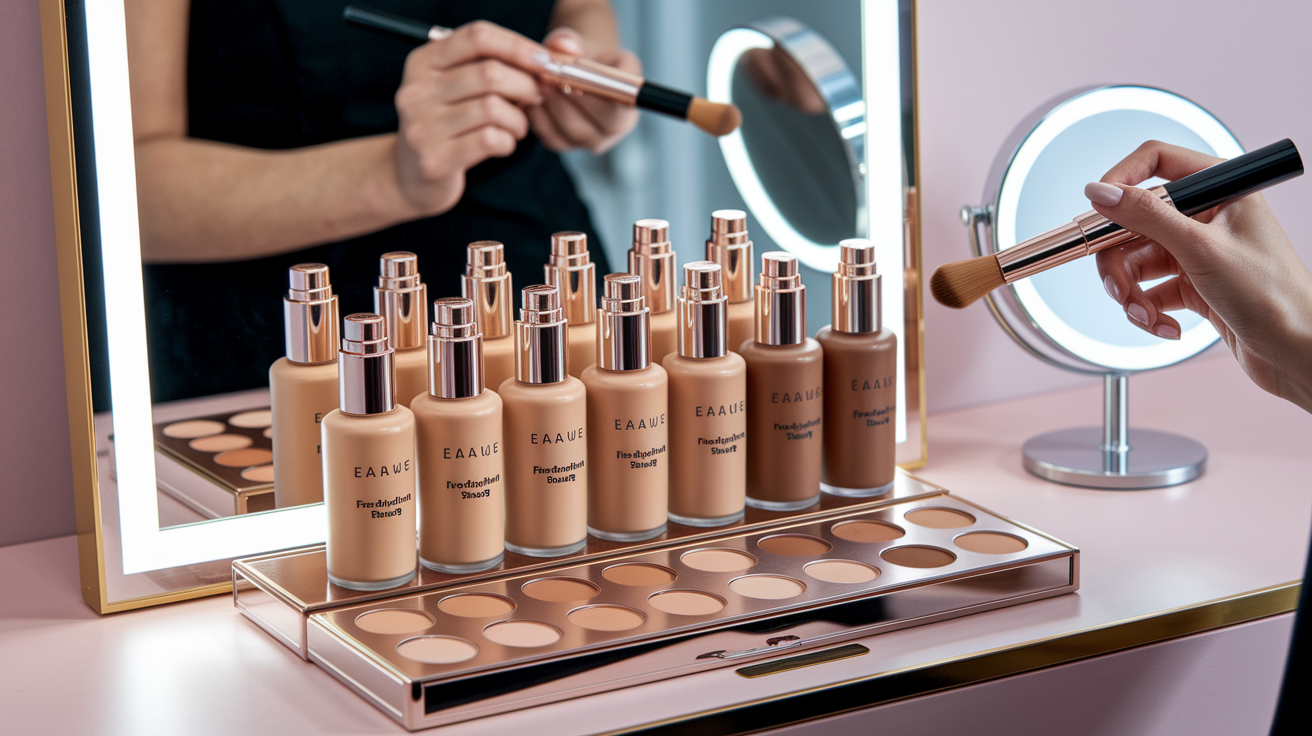
A true foundation match begins with understanding your skin undertone, then swatching different shades on your face and checking the right foundation shade in multiple lighting environments. Swatch test your foundation shade—swatch before you buy, swatch more than one option, and let each swatch set before you decide.
Where to Swatch
Start by checking the jawline where your face and neck connect. This area reveals both your facial tone and the skin undertone of your neck, helping you avoid that hard line that screams 'incorrect foundation match.' It's crucial to find the right foundation shade that complements your complexion.
Avoid relying solely on your hand or wrist for a foundation match, as these areas often display warmer or darker tones that don't reflect the color of your cheeks or neck. If you must use your arm for comparison, treat it as a rough guide rather than a definitive answer.
To find the perfect foundation, lay out three to five cool-leaning shades along your jawline: one you believe is ideal, one half-step lighter, and one half-step deeper. Including any 'cool' variants the brand offers allows you to assess both depth and skin undertones at a glance.
If you're unsure where to start, focus on depth first—fair, light, medium, or dark—and then assess the undertone. Remember that cool undertones display pink, red, or blue hues, while warm undertones lean yellow, gold, or peach. Neutral undertones sit comfortably in between, so don't confuse depth with undertone.
How to Swatch
If possible, use testers or samples at a beauty store and apply thin stripes. Blend the edges slightly, but don't buff it flush. You want to see how it melts into skin.
Pause for a minute or two. A lot of formulas oxidize or dry down, becoming a little deeper or warmer. Allow it to dry or settle so you see the actual color.
Select the shade that melts into your skin while maintaining your natural cool undertone. If two look right, make note of both – your shade can shift with season and sun.
Check your foundation color. Write the specific names or numbers in your phone. Stuff like 'winter match' or 'mix with 0.5C'. A lot of us maintain a couple of shades to span tone shifts throughout the year.
Check the Lighting
Store lights can seem too yellow or cool which hides undertones. Always step to a window or outside and look with your phone's front camera off to prevent screen glare. Natural light is truth-telling.
Double check with a different lighting–shade outside, office light, evening room light. If it blends all three, you're good to go. If it appears gray, the shade is probably too cool or too light. If it turns orange, it's probably too warm.
Your response to the sun gives you your hints. If you burn fast and seldom tan, you may lean cool. If you tan easily, you can skew warm. Some sit neutral.
Reexamine each season – shifting depth, not undertone, as your complexion changes.
Avoid Common Foundation Mistakes
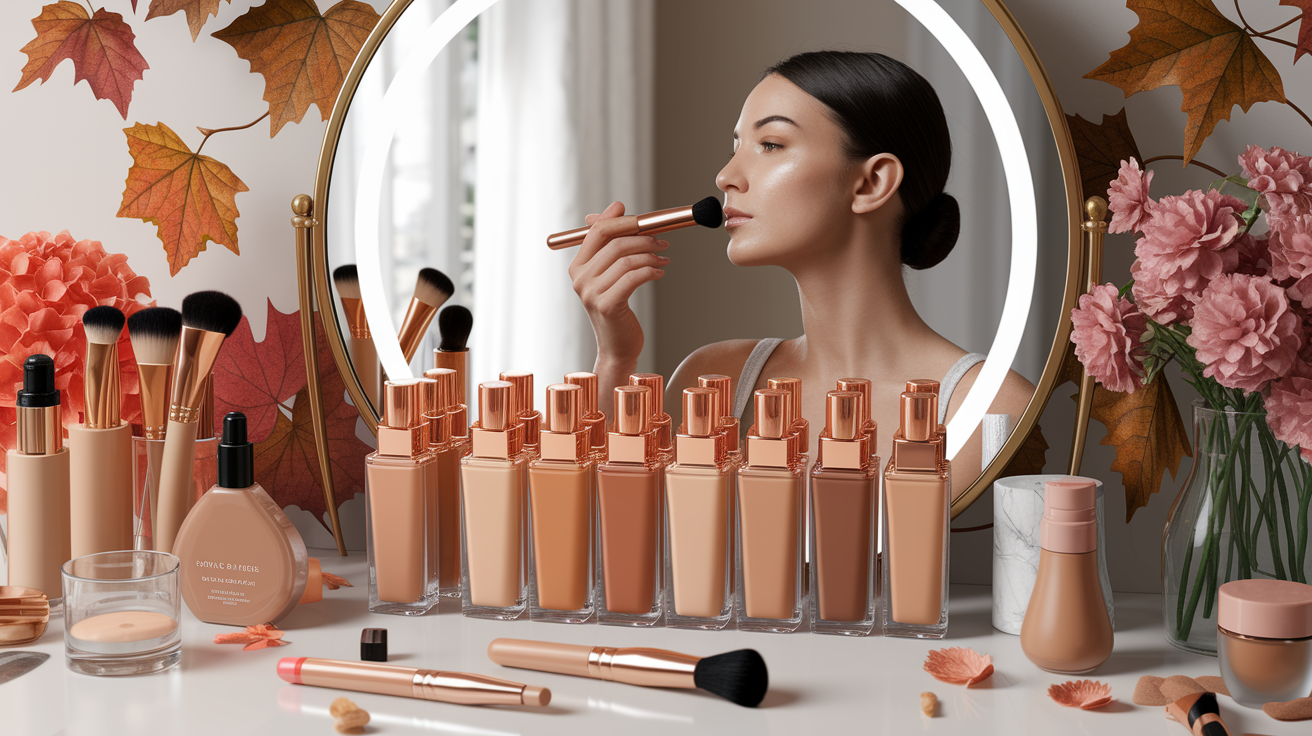
Picking a cool-toned foundation sounds easy, but little mistakes add up quick. Bottles and online swatches fool—shades move on genuine skin. The incorrect undertone makes skin look ashy, ruddy or flat. Put a swatch on your jawline or neck, blend it in, wait, then check it in daylight.
Check back every season. Take notes on what works, and audit your routine so the same errors don't creep back in.
The Lighting Deception
Store lights can be tricky—too warm or too cool—and can conceal your skin undertone. Fluorescents may give you a green cast, while warm bulbs can push peach, affecting your search for the right foundation shade. This can warm up a neutral-cool shade or alter a true cool pink beige. Bad lighting blurs lines, making it hard to see a clear foundation match indoors, but it becomes evident outside.
My biggest foundation tip: Test in daylight before you purchase your perfect foundation. Take a hand mirror, stand by a window or outside, and look from various angles. Swatch three stripes on your jaw—your best guess, one lighter, and one deeper—then blend with a clean finger or brush. Let them sit for a few minutes to adjust and observe the shade match.
Avoid foundation blunders by ensuring the shade blends into your neck so that your face and body read as one tone. A good foundation match will seamlessly disappear into the skin, requiring fewer touch-ups and preventing that ugly obvious line of demarcation.
The Oxidation Trap
Certain formulas deepen or become warmer after air, heat or skin oils strike them. That means what begins as a fair cool can dry down a bit deeper or more orange, which battles cool undertones and makes skin appear ashy.
Give it 10–15 minutes after swatching. Blend the swatches, let them fall, then reassess in sunlight. If you know a brand oxidizes on you, grab a hair lighter so the ultimate dry-down sits just right.
Check out reviews and watch for comments such as 'oxidizes', 'dries darker' or 'pulls warm'. They'll often call out lines susceptible to this shift.
At-home test helping. Wear the sample through a full day—commute, light sweat, meal—and observe for color shift, patchy, or cakey. Deep blending upon application maintains the base level and anchors it in!
The Seasonal Shift
Skin tends to lighten up in the winter and darken up in the summer, due to sun exposure and changes in our routines. Your flawless cool match in January can appear pasty or ashy in August.
Keep a winter and summer version of the same formula and re-evaluate on every major season change. Mix the two on the back of your hand to adjust in spring and fall.
This easy move balances out the face and neck and allows the crisp undertone to remain authentic throughout the seasons.
Perfect Your Application
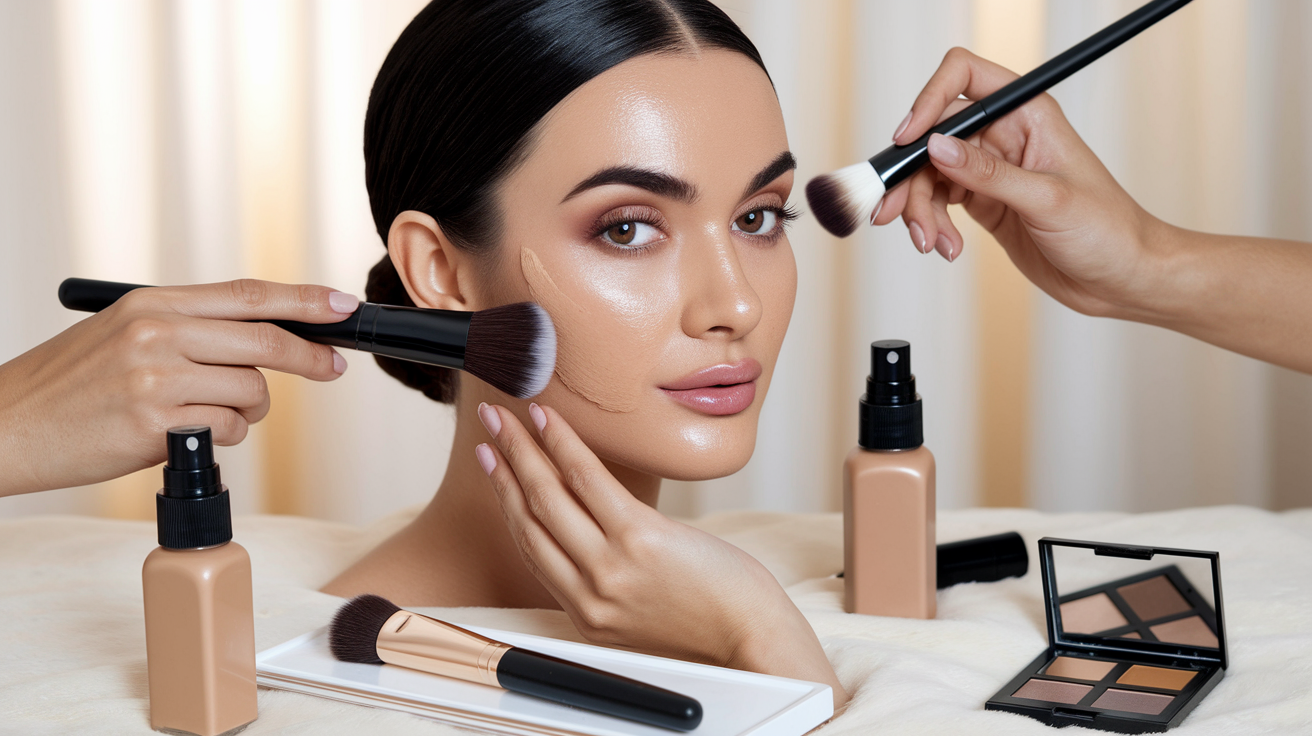
A sheer, even base allows cool undertones to appear true, avoiding a dull or pink look. To achieve the perfect foundation match, prepare properly by selecting products that complement your complexion, blending with purpose, and setting for a flawless finish that endures heat and humidity.
Prepare Your Canvas
Clear skin is step one. Wash with a gentle cleanser, then gently dry with a pat. Moisturize with a light cream or gel so pigment spreads without snagging on texture. If you run dry, go richer at night and lighter by day to prevent slip.
Primer assists the majority of us. For visible pores, a silicone-based primer on the T‑zone. For dry or mature skin, a moisturizing primer prevents cool tones from looking blotchy.
Pause 60–90 seconds to let each layer set, hurrying traps slip beneath pigment. Targeted care rewards. Pat balm on flakes near the nose and brows. For redness that can bias cool shades too pink, calm skin first with a soothing serum.
Match still matters: use the white paper test to see if your face leans rosy or cool-olive, then test two or three shades on the jawline and let them sit. Skin tone changes with sun, products, or age, re-match by season.
Select Your Tools
A wet sponge delivers a glowy, dewy finish that compliments cool undertones, particularly when applied over satin or serum bases. It melts edges quickly and prevents blue-toned colors from appearing dense.
Thick brushes create total, rapid coverage. If you're seeking lighter skin to keep balanced, go for a flat-top or kabuki for polish. For days on end, a stippling brush pounds pigment on weightlessly.
Fingers do well too, with thin liquids; the heat of your fingers helps melt product, but wash hands first! Wash tools weekly to prevent breakouts and streaks — a gentle soap will do — and dry brushes flat.
Try tools with your own formula. A slushing, water-thin tint could soak into a sponge. A brush might be more appropriate.
Blend with Purpose
Dot at center—sides of nose, chin, between brows—and sweep outward. This maintains the edge luminous and flesh-like. Use tapping or low-stippling. This maintains an even coverage and prevents your undertone from drying out or becoming gray/streaky.
Glide just to lay down product, then move to patting. Mind the margins. Press around hairline, ears and jaw. Bring a sheer veil down the neck if your chest runs lighter.
TEST MATCH IN DAYLIGHT. Vein test on the wrist or chest assists in confirming undertone—cool often appears blue or purple—and can direct shade families. Apply in thin coats. Try a swatch and observe how it integrates after several minutes.
If one shade falls flat all year, blend two tiny dabs to map seasonal changes!
Conclusion
Locating the best foundation for cool tones seems less impossible now. Skin with pink, red or blue hints looks fresh with the right match. Choose ones with 'cool', 'pink' or 'neutral-cool' in the shade description. Choose a foundation that matches your skin type. Dry skin loves dewy. Oily skin loves soft matte. Shoot for light, buildable cover. Skin still looks like skin.
Little steps assist. Dot a few shades on the jaw. Step into the sunlight. Look for a gray cast. Spot a mismatch quickly. A thin layer mixes clean. Set lightly. Consider soft edges, not hard edges.
Need a fast pick list or shade map by brand? Include your skin tone, type and best 3 shade matches you tested. I'm going to help you seal it in.
Frequently Asked Questions
How do I know if I have a cool undertone?
Check for pink, red, or bluish hues in your skin to identify your skin undertone. If your veins appear blue or purple and silver jewelry outshines gold, you likely have a cool undertone, which is crucial for finding the right foundation shade.
What foundation shades work best for cool undertones?
Select colors ending in C, Cool, or Pink, such as 'porcelain,' 'ivory,' or 'rose beige,' which indicate a cool undertone. Avoid yellow or golden hues, and if you're unsure, a neutral undertone can help you find the right foundation shade for a perfect foundation match.
How can I test foundation for cool undertones in-store?
Swatch three similar foundation shades on your jawline in natural light, considering your skin undertone. Wait a couple of minutes to see if they oxidize. The right foundation shade should vanish into your skin without becoming yellow, gray, or ashy for a flawless finish.
Why does my foundation look gray on cool skin?
The foundation shade may be too warm or yellow, or it could appear too deep or oxidizing. Opt for a cool or neutral undertone formula for the right foundation shade. Always check your foundation match in daylight for a flawless finish.
Can I wear neutral foundations if I'm cool-toned?
Yes, if 'true cool' shades appear too pink, opt for neutral undertones or neutral-cool foundation shades. These can help even out the complexion without adding yellow. Test on your jawline to ensure a perfect foundation match with your neck and chest.
What finish suits cool undertones best?
It depends on your skin type! For dry skin, a radiant formulation or hydrating foundation offers a luminous finish. Oily skin benefits from a soft matte foundation. For combination skin, a silky serum foundation provides a natural or satin finish. Prioritize finding the right foundation shade for your skin undertone, then choose based on your finish preference.
Are drugstore foundations good for cool undertones?
Yes. A lot of them offer a variety of cool and neutral-cool foundation shades. Cross-reference shade codes and skin undertones to find the right foundation shade. Try if you can, or purchase from easy returns stores.